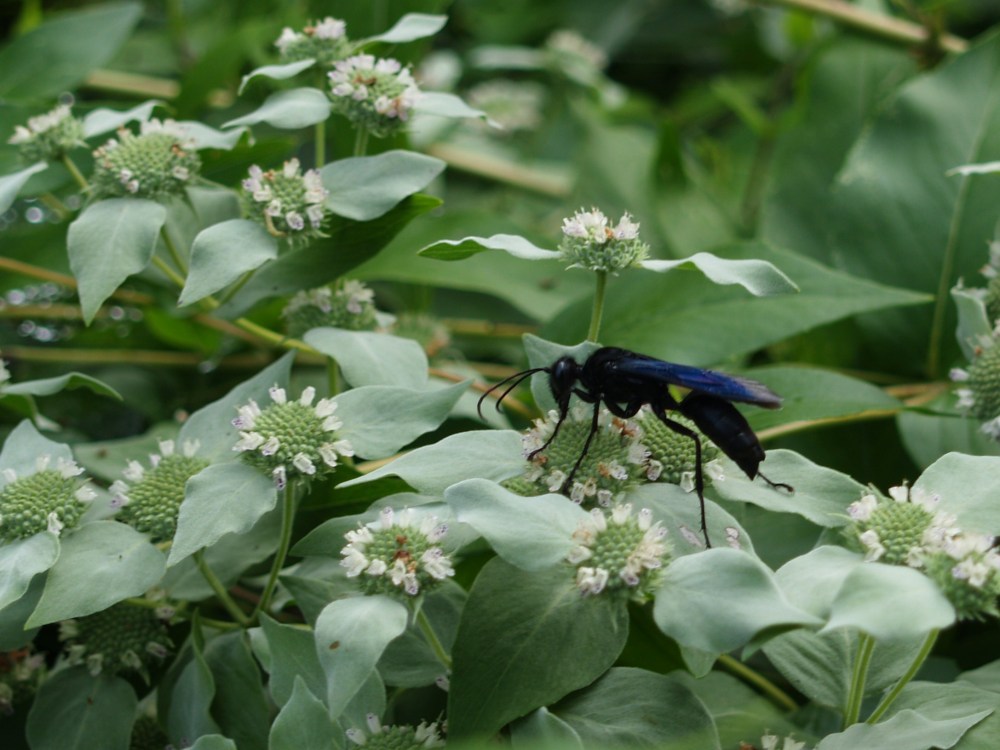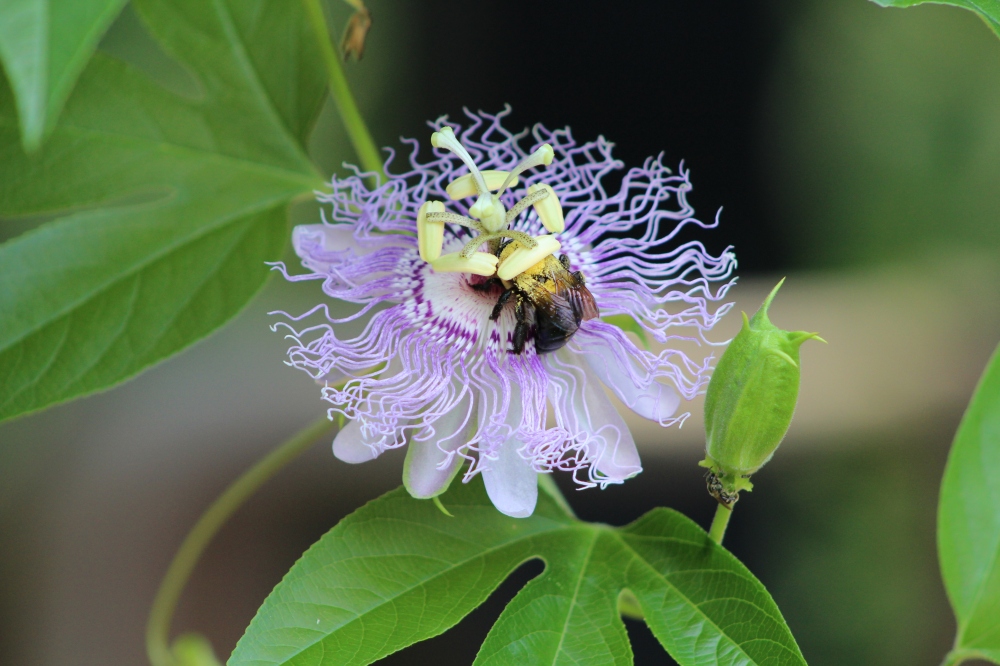Much about the fate of bees and other pollinators has been discussed by government and gardeners in recent years. I cannot argue, except in my small part of the planet where there is no sign of their diminished numbers. On any sunny afternoon from July through September, the gardener need only stroll past his small patch of Mountain mint (Pycnanthemum muticum) to reassure that wild bees have not disappeared. Here are more bees and wasps than can be counted, and a more timid gardener might fear to linger too long in close proximity to such a quantity of stinging beasts.
I’ve been stung a time or two, though I can’t recall the instance, and perhaps never while observing the Mountain mint that fully captures the attention of pollinators while they feast on its nectar. Rarely do bees notice as I come too close, attempting to identify one of the many that is not readily recognized. The frenzied scene appears to be a bout of competitive feeding, with the scrumptious nectar not exhausted until late summer.
Admittedly, the patch of Mountain mint is not so small anymore, and the gardener looking to add this pollinator favorite should be aware that natives can also be aggressive. I advise that it is easily controlled, with roots pulling readily if it should stray too far. Certainly, there is no flower in this garden that is effective for such a long period, and none that attract pollinators for several months.
For reasons beyond my limited comprehension, seedlings of ‘Little Joe’ Joe Pye weed ( Eupatorium dubium ‘Little Joe’, below) growing in damp muck at the edge of the koi pond flowered weeks earlier than others. With ‘Little Joe’ and native Joe Pye in the swampy rear border of the garden beginning to flower as the seedlings faded, Tiger swallowtails have been seen in greater abundance this summer.
While the native Joe Pye grows on tall stems that arch with the weight of the large flowers, stems of ‘Little Joe’ are more stout, growing to a more appropriate height for the garden. While a few seedlings of Joe Pye are found, these are scattered and are never a concern.
I love your posts and am so glad to hear that bees are doing well in your garden! Thank you for your wonderful, gentle updates. It’s so nice to read them! Take care.
I have a lot of honey bees and other insects here too. We used to have hives and I’m sure a lot of the escaped into the wild. I know for sure that we have two hives in hollows to two trees.
We started a beehive this year and hope to add others next year to boost our honeybee population. Interestingly, our bees bypass our clover and the zinnias next to the hive but gather lots of pollen to store. They have their favorite local sources…..I am going to grow some mountain mint for them after seeing your pictures!
My newly gifted Mountain Mint have yet to bloom , but excitement grows after reading this post . Lovely pollinator portaits!
References give recommendations for plants that attract bees and other pollinators, but experience verifies that all flowers are not equal. There is no flower to compare with Mountain mint in this garden, and I suspect that it will become a bee favorite in any garden.
I have lost my mountain mint and need to get more. I did not realize there was a little joe pye weed ? You are blessed if you have a lot of honeybees near you. That is not the situation in many areas.
I notice many more bumblebees than honeybees, or at least they are not seen in abundance until Mountain mint is flowering.
Yes, I too see more bumblebees but the honeybees can use it. During times of dearth any nectar is important. LOL